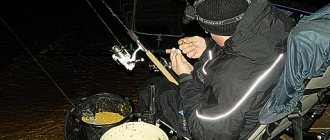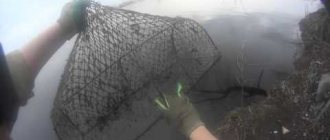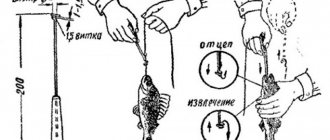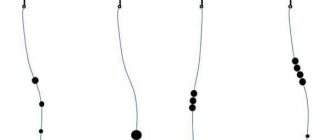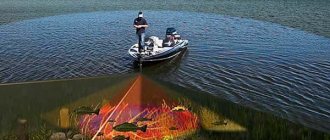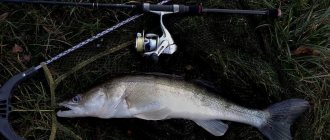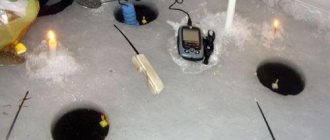Night fishing is no less interesting and popular activity than its daytime variety. During certain periods, such as when the weather is extremely hot and dry, fishing at night is often much more effective.
One of the main disadvantages of such fishing is poor visibility at night. The appearance of fishing fireflies completely solves this problem; this device becomes one of the main assistants, which allows you to see the bite even in complete darkness.
The composition of such devices includes the following substances:
- Luminol is one of the most common components. It has a powder form, and when it gets into an acidic environment, it begins to emit a bluish glow.
- Hydrogen peroxide, oxalate and coloring matter . Components that mix with each other form a chemical reaction, due to which light energy is released.
At the same time, it will not be possible to open fireflies to treat them with components of other objects, since all active substances react instantly with oxygen, after which they evaporate or simply lose their basic properties.
What are fireflies
A firefly for fishing is a light bite indicator that is installed on a float and is used for night fishing. Such devices emit a fluorescent glow that can be easily seen in the dark.
The advantages of such devices are that they:
- They have a relatively low cost.
- Very easy to use.
Today the market offers a wide range of similar products from various manufacturers. Regardless of the manufacturer, the devices have almost the same operating scheme.

The composition and design of fireflies are quite simple:
- The basis of the firefly consists of a capsule containing a certain chemical substance.
- Inside the capsule there is another small capsule. Such a glass tube stores another chemical liquid.
To get the firefly to work, you need to break the inner glass tube and shake the capsule thoroughly. As a result of fracture, substances enter into a chemical reaction with each other. During this reaction, a glow occurs. The chemical reaction can take place over several hours. But, over time, the light will fade.
If the inner glass tube breaks, be careful. The glass tube may compromise the integrity of the outer capsule. Air entering the capsule will prevent the chemical reaction from occurring. As a result, the glow will be weak or absent altogether. If necessary, the firefly can be frozen to stop glowing. When exposed to sub-zero temperatures, the chemical reaction stops. In the future, the capsule can be warmed with the warmth of your hands and put into action again.
Today there is a large selection of fireflies on the market. They can have different shapes and sizes.
As for the form, fireflies can be in the form of:
- Sticks. Such products have a classic cylindrical shape. They are considered universal devices.
- Nails. These capsules are somewhat similar to previous products. The peculiarity is that they have a pointed end, which points to the biting point.
- Light bulbs. Such fireflies have a spherical thickening. This allows you to significantly increase the radius of illumination.
Fireflies can be used not only with fishing rods, but also with spinning rods and other gear.
Chemical
Fireflies based on “chemistry” have one important advantage: they are light in weight and dimensions, that is, they practically do not affect the sensitivity of the gear. However, they are disposable and require replacement after working for several hours. In addition, their brightness cannot be adjusted.
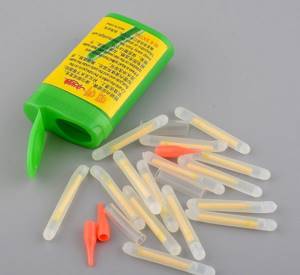
Disposable fireflies for fishing with fastenings.
This device is a flexible capsule, slightly larger than a match. Inside the flexible capsule is another capsule, smaller and more rigid. To activate the firefly, bend the structure so that the capsule inside breaks.
After this, the liquid inside the hard capsule will mix with the one outside and a chemical reaction will begin, accompanied by a glow.

A firefly that is broken in several places shines more brightly and evenly.
This type of firefly is very cheap. On Aliexpress you can buy a batch of 50 pieces of similar products at a price of 160 to 190 rubles, i.e. approximately 3.5 rub. a piece.
Firefly selection
When choosing a firefly, you should consider:
- Manufacturer company. Experienced fishermen prefer to purchase products from well-known manufacturers. Of course, such fireflies are somewhat more expensive than Chinese-made products. But this is the only way to be sure of the quality of the product.
- Also, when choosing such fishing accessories, it is worth considering the color and duration of the glow. As for color, fireflies for fishing can have yellow, blue, green and other shades. The yellow-green fireflies are the best to see. Of course, when deciding this issue, you should take your preferences into account.
As for the duration of the glow, the products are divided into several types. Cheap and quickly fading fireflies can work for no more than 4 hours. Fireflies with a glow duration of up to 7 hours are considered a universal option.
Solving such questions will allow you to find the most suitable fireflies. When using them, you should make sure that they are securely attached to the gear. They are often attached to signaling bells. Modern bells have special holes that are designed for attaching just such visual alarms. After use, they must be disposed of with other waste.
Popular firefly models
Today there is a large selection of fireflies for fishing on the market. Among the available options, it is worth highlighting the following models:
The Robinson Firefly is 39mm long and 4mm in diameter. These fireflies can emit a glow for 12 hours. Often the kit includes a mount for the feeder and a float. Such a product costs about 15 rubles.

The Spro Firesticks are small in size, measuring only 25mm. Product diameter 3 mm. The manufacturer guarantees that such a product can work for 12 hours. The kit includes accessories that will allow you to attach the product to the gear. This firefly costs only 16 rubles.
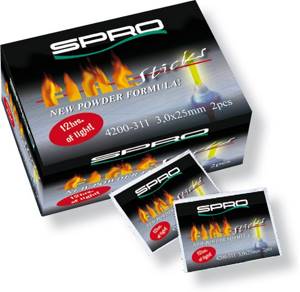
Fireflies Ocean Sun LP are distinguished by their low cost. The length of such fireflies is 25 mm, and the diameter is 3 mm. They cost only 18 rubles.

Fireflies from Balzer. The capsules are 39 mm long and 4.5 mm in diameter. These fireflies glow very well in the dark. They can be used on both floats and feeders. Special adapters are used for mounting on floats. The cost of such a product is about 30 rubles.
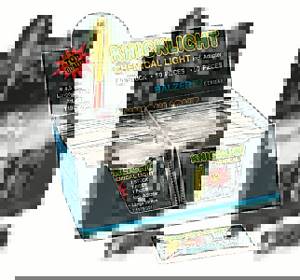
Products from the Salmo company are no less popular. Such fireflies have a diameter of 3.8 to 4.3 mm. The set can consist of one or several fireflies. The kit includes an adapter with which the firefly is attached to the float. Such a firefly costs around 35 rubles.
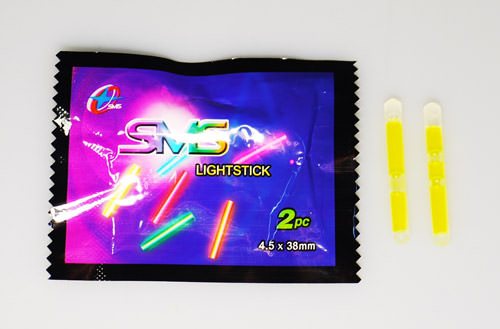
How to make a firefly with your own hands
Fireflies for fishing can be found in almost any specialty store. Their cost depends on the country of manufacture and quality of workmanship. Of course, if desired, fishing enthusiasts can build such fishing accessories with their own hands.
So, how to make a firefly for fishing:
- To create a firefly you will need reflective foil. It is better to use yellow or white foil. First, you need to cut the foil into several strips, the width of which should be 5 mm. After this, the strips are glued to the float antenna. To perform this work, you should use rubber waterproof glue. To make the float glow, you need to point a flashlight at it. There is no need to use powerful light sources. Just a little light will be enough.
- You can also build a firefly using ascorbic acid and an LED. To do this, you need to take an empty 500 gram jar of ascorbic acid tablets. You need to place the LED in the jar along with the batteries and close it tightly. To do this, you can use the LED from the lighter. Such a device can be attached to both the feeder and the bells. To make the LED glow more noticeable, you can make a window.
- To create fireflies, you can also use specialized paints that, due to their composition, can glow in the dark. To do this, you just need to apply paint to a float or a small capsule made with your own hands. To do this, you can take a piece of board and cut out a capsule from it that resembles a firefly, which you can buy in a store.
- You can also build an electronic firefly. To make it you will need an aluminum tube and a disposable syringe. The syringe will be used to create a battery container. You need to make a hole in the bottom of the syringe into which the bolt will be screwed. The syringe will be inserted into an aluminum tube. On one side, an LED is installed, and on the other, a cut-off syringe with batteries. To power the LED, two batteries will be enough.
The LED is inserted so that one of its contacts is in contact with the housing. After this, the product is attached to the signaling bell. When the bell twitches, it will activate the LED. The peculiarity of this firefly is that it can be used several times.
Insect pins
When going insect hunting, the young naturalist puts on his simplest clothes.
The main attention should be paid to the shoes; they should be very durable and should protect the feet well from dampness and cold. The headdress must be strengthened in such a way that it holds well and does not fall off during a fast run while hunting - it is very inconvenient to hold it with your hands, since they are needed to catch insects. The best time for catching insects is usually May and June - only some types of insects can be caught by the end of summer. More convenient hours of the day, if you have a choice, should be considered the afternoon, because most insects usually fly in the hottest hours of the day, when the sun's rays are most warm;
There are special nets for catching butterflies. The net, supported by a stick, consists of a circle made of strong wire; The diameter of the circle is approximately 30 centimeters. A rather long bag made like a cone from some light material, gas, etc. is attached to the circle.
It is more convenient to make the circle described above from two separate, well-folding halves, each of which is equipped with a quadrant hole at the lower end and secured with a nut. An ordinary stick is driven into a hollow iron cylinder and secured with a side screw.
When he sees insects, the young naturalist carefully approaches, trying to walk in such a direction that the shadow he casts is placed behind him and not in front - otherwise, the approaching shadow will frighten the insects and they will quickly fly away.
At some distance from the insect, the boy deftly throws a net over it, making several movements with it from side to side, due to which it surrounds the insect so much that it is not possible for him to escape from the net.
In addition to the mesh, you also need to stock up on scissors of a special device, which consist of a handle made of strong iron wire, and legs representing frames, approximately quadrangular or round in shape, also made of iron wire and covered with gas (gauze). Both frames differ in size, so that when the scissors are closed, the larger frame encloses the smaller one - thanks to this special device, the captured insect is firmly held.
We have already mentioned above that for catching butterflies it is most convenient to go on bright, sunny and windless days. As for the places where butterflies are most likely to gather in large numbers, these include fields sown with clover, the edge of a forest dotted with beautiful flowers, vast, beautiful meadows, etc.
As dusk approaches, nocturnal butterflies usually appear; at night, whole flocks of small midges, etc.
To attract more moths to one place, to a tree or bush, their branches are doused with a mixture of honey, water and white beer or sugar water; butterflies, attracted by the smell, gather somewhere on one of the branches, where, with some dexterity, it is not difficult to catch them.
Killing of caught insects must be done quickly and skillfully in order to save them from unnecessary suffering, the sight of which develops cruelty in children.
With small butterflies fluttering during the day in the light of the sun, the punishment is short: you just have to press harder from left to right the lower part of their chest, and the butterfly immediately turns into a corpse.
Killing larger moths and moths involves some difficulties. There are several methods practiced for this purpose: they bring the caught prey home and expose it to hot water vapor, or they take tin boxes with them for a walk, at the bottom of which there are small pieces of cotton wool soaked in sulfuric ether, in these boxes the insect is placed in the very moment it was caught.
Killing by hot steam is carried out as follows: water is heated to boiling in a pot covered with a tin lid, to which is attached a small vertical tube equipped with a narrow hole. As soon as the water in the pot begins to boil, hot steam appears from the narrow opening of the tube, instantly killing the insect brought to it, which is first placed on a pin. To protect your hand from the action of hot steam, grab the pin with tweezers or tweezers.
Killing insects at home requires great precautions to ensure that the caught prey retains its beautiful, unbruised appearance.
Insects are brought home in ordinary pill boxes or small triangular funnels made of ordinary paper, into each of which a butterfly is carefully lowered, trying not to crush its beautiful wings.
Pins for pricking insects are made in a special way; they differ from simple pins in that they are longer and thinner. The puncture with a pin is made through the middle part of the insect's chest, carefully passing the pin through its entire body.
Spread the insect on a damp board before it dries, or on a layer of damp sand under a glass cover. Remaining for some time in this environment, the insect absorbs moisture and becomes flexible and soft.
It also happens: How to catch bloodworms
For spreading butterflies, I sell various boards made of linden wood and equipped with recesses of various depths and widths, designed for butterflies of various sizes.
The butterfly is placed in a recess of the appropriate size, its wings are carefully and carefully straightened, narrow strips of paper are secured on them with pins and left until the butterfly is completely dry.
Each board is equipped with a piece of paper glued with gum arabic, on which the belonging of the butterfly to one or another species is indicated. To determine the species, genus of butterflies, etc. They usually use some kind of natural history textbook that is understandable to children.
Collections are stored in boxes approximately 20-25 centimeters wide, 30-40 centimeters long, and about 6 centimeters high.
Having carefully placed the collections in the box, it is covered with a sliding wooden or glass lid. A cork of known thickness or peat is placed at the bottom of the box so that pins can be inserted freely.
It is most convenient to prick butterflies in a certain order from top to bottom; Before closing the box, a small vial filled with gasoline is placed in it, which protects them from moths and beetles. Instead of a bottle of gasoline, you can also put a few grains of camphor in the box.
In the case when the wings of the butterfly become wrinkled again from time to time, the butterfly is again placed on damp sand under a glass cover and then, when the wings become soft and flexible again, they are carefully straightened. When mold appears in the box, the corresponding place is lubricated with a brush dipped in alcohol or ether.
Collecting beetles is unlikely to differ in any significant way from collecting butterflies. Beetles are found especially often in vegetable gardens, meadows, etc.; They are usually caught with a bag called a scoop. The latter consists of a stick equipped at one end with a wire circle, to which is attached a bag made of coarse linen. The scoop, with the hole pointing downwards, is moved across the grass, bushes, etc., capturing any insects that come across in a bag.
There is another device for catching beetles, the so-called mace, arranged as follows: a stone of quite significant weight, or a weight weighing 2 pounds, is carefully wrapped in rags and covered with cloth or leather, after which a belt is attached to it accordingly or rope.
With such a mace, children go to catch beetles - approaching a tree, they spread a scarf under it and hit the tree trunk with a certain force with the mace. The blow causes the tree to shake, and beetles, caterpillars, etc., which have found shelter in various corners of the tree, fall on the scarf in abundance.
The method of catching beetles just described is especially practiced in places where deciduous trees grow.
In the early morning hours, when a mace strikes such a deciduous tree, heaps of insects usually fall to the ground. Some types of beetles are found in ant nests, so when going after them, you need to carefully inspect the anthills.
The caught beetles are usually stored until returning from a walk, in a bottle with a little moss placed at the bottom. At home, they are quickly killed by immersing them in another, pre-prepared bottle filled with alcohol. Instead of alcohol, you can pour sawdust moistened with gasoline into the bottle.
Next, small beetles are attached using gum arabic to a piece of thick paper, after which they are pierced. Large beetles are immediately pierced with a pin, passing it through the middle of the right horny elytra. Very large beetles are placed on a piece of woolen material, trying to do this while they are still wet, then their legs are carefully and carefully straightened with a pin. Further work when collecting beetles is the same as when collecting butterflies.
However, all this is in vain, because at night the fisherman has a chance not only to enjoy the fight with a particularly large trophy, but also to fill the fishnet with tails. I will try to explain in detail why.
Did you know that after sunset the most inveterate robbers of the underwater world come out onto the main road? What exactly is it in the pitch darkness that giant peaceful fish - paranoidly suspicious during the day - become so self-confident that they approach the shore closely? That some underwater inhabitants have known the night so intimately and absorbed its essence that they walk and feed only in the dark?
And while the fisherman is sleeping in his tent, the unimaginable is happening on the other side of the water’s edge. There is the very denouement, the very culmination of the underwater action. Why not take advantage of this blessed time?
Of course, night fishing is more difficult and extreme than day fishing. You can no longer relax here, here you have to make more efforts and concentrate your attention more clearly, and this is often accompanied by discomfort from the night conditions. But, be that as it may, the game is worth the candle. And all the fisherman needs to do for the night to be successful is to study its secrets, but first of all, to properly prepare for it.
It also happens: Grasshoppers are bait for fishing
Methods for attaching fireflies for fishing
Features of attaching fireflies to gear:
Fireflies are often used on floats. To attach the firefly to the float, special transparent silicone tubes are used. Often such tubes come complete with devices for night fishing. If a regular float is used for fishing, then the firefly is attached to its antenna. If the antenna is very narrow, then some problems may arise with attaching such accessories. In this case, you can put two rings on the antenna. To produce such rings, you can use nipple elastic. The connecting tube with the firefly is put on top. When catching predators, large floats are most often used. In this case, the capsule is inserted inside the float. It is closed on top with a cap, which will also be included in the kit.

Fireflies are often used when fishing on a feeder. In this case, they are attached to the tip of the feeder. To attach them, you can use two silicone rubber bands. Such elastic bands are very easy to stretch, which allows them to pass through the tulip without any hindrance. To begin with, the firefly is broken and then attached between the second and third ring of the top of the feeder. To prevent the braid from catching on the capsule, its end can be secured with ordinary tape. You don't need to wrap a lot as this will make the glow less noticeable.
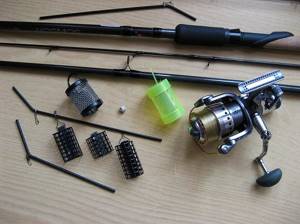
Fireflies can also be attached to signaling bells. They will allow you to perceive a bite not only auditorily, but also visually.
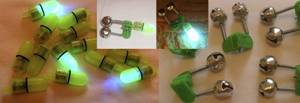
Photo of a bite alarm for a feeder
Note!
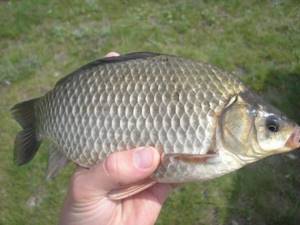
Catching crucian carp on a feeder - tips and secrets of professionals. 115 photos and videos master class for beginners- Bait for the feeder - popular mistakes, recipes and do-it-yourself bait. Ingredients for bait (110 photos)
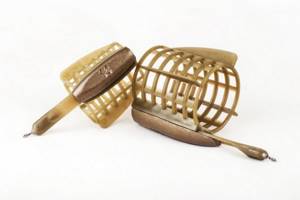
Feeders for feeders: feeder design, equipment and tips for beginners (125 photos and videos)
Read here Which feeder is better - the basics of fishing and beginner mistakes. What kind of fish are caught on the feeder? (135 photos + video)
Help the project, share on social networks 

0
The nuances of fishing when using fireflies
When using fireflies, it is worth remembering that during fishing, the braid and fishing line can get caught behind the firefly. To prevent this phenomenon, you need to wrap the ends of the firefly well. To do this, you can use regular narrow stationery tape.
In addition, long-term observation of it negatively affects vision. The eyes get tired very quickly. Of course, experienced fishermen have found a way out of such situations. To reduce eye strain, fireflies should be used together with bells. In this case, the bell will signal a bite, and the firefly itself will signal a specific tackle.
When using a firefly, you should make sure that it is securely attached to the gear. Otherwise, it can be lost during the casting process or when retrieving the fish. It is best to use clothespins, which are installed on the tackle after casting and removed before pulling the tackle.
